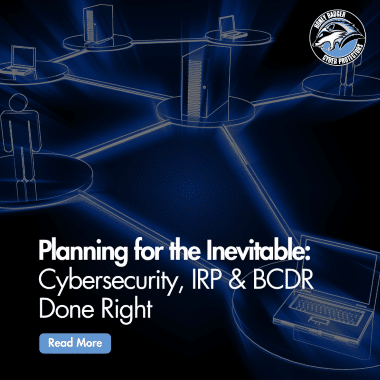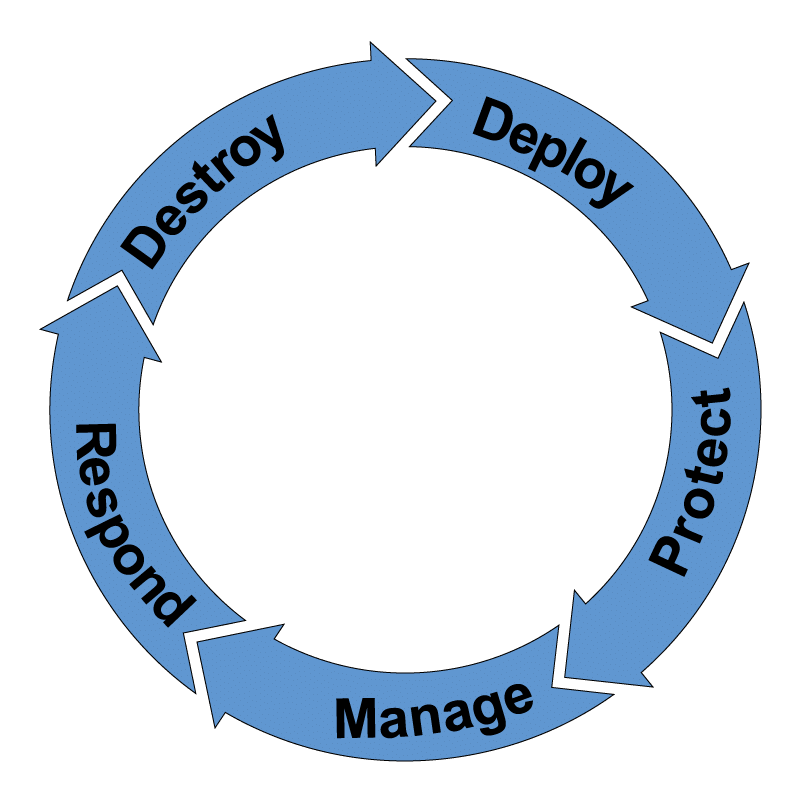Planning for the Inevitable: Cybersecurity, IRP & BCDR Done Right
 Cyber threats don’t wait for your schedule. So why are so many organizations still waiting to take a hard look at their cybersecurity posture each quarter?
Cyber threats don’t wait for your schedule. So why are so many organizations still waiting to take a hard look at their cybersecurity posture each quarter?
It’s a question we ask not to provoke, but to prepare. Because the truth is, no matter how good your security stack is, no matter how recent your last compliance audit was, the state of your cyber resilience can change dramatically in 90 days. New hires. A vendor transition. A missed patch. One open port. That’s all it takes.
When an incident occurs, companies don’t rise to the occasion. They fall to the level of their planning.
Take the scenario of a mid-size health group. They believed they were buttoned up. Their systems had all the right acronyms: MFA, SIEM, EDR. But when they faced a credential-stuffing attack tied to a third-party contractor, they discovered their incident response plan hadn’t been updated in 18 months. The contact list was wrong. Their primary IT lead had left six months earlier. No one knew who to call. Valuable hours were lost, and the recovery was twice as expensive as it needed to be.
This story isn’t rare. What’s rare is the organization that reviews its posture, plans, and partners quarterly. But those who do? They recover fast and sleep well.
What Does Quarterly InfoSec Planning Really Include?
Quarterly planning isn’t a checklist; it’s a practice. And it’s broader than many people assume. It includes:
- Staffing reviews: Is your security operations center (SOC) still adequately staffed? Have roles shifted? Has responsibility become siloed?
- Vendor management: Are your vendors still adhering to contract security clauses? Do they still need access to your systems? What offboarding processes are in place when relationships end?
- Compliance tracking: Regulations shift, especially in industries like healthcare, finance, and education. Quarterly reviews make sure nothing slips through the cracks.
- Metrics and maturity models: Are you tracking metrics like MTTD (Mean Time to Detect) and MTTR (Mean Time to Respond)? Are you moving forward or standing still?
Quarterly business reviews (QBRs) from managed service providers are not enough. True InfoSec planning pulls in voices across operations, risk, and leadership.
The Role of the vCSO: Strategy, Not Just Support
Many companies lack the internal capacity or expertise to lead these efforts. That’s where the virtual Chief Security Officer (vCSO) becomes a game-changer.
The right vCSO brings objectivity with an outside perspective grounded in deep industry knowledge. They see patterns that internal teams may miss, and they’re not afraid to ask the tough questions. Have we drifted from our risk tolerance? Are our backups validated, or just assumed? Who owns our IRP now?
But beyond asking questions, a vCSO facilitates planning across departments. Legal. HR. PR. IT. Compliance. Everyone has a role in cyber resilience. The vCSO makes sure they’re all on the same page, moving with the same urgency.
Incident Response Plans Aren’t Just Documents, They’re Lifelines
The best IRP in the world is useless if it’s collecting dust.
Real-world incidents show that the weakest point in many security programs isn’t technology, it’s communication. When a breach happens, who responds? What gets shut down? When does PR get looped in? These answers should never be made up on the fly.
Following the six-phase NIST framework, a strong IRP should include:
- Preparation: Defined roles, trained staff, and communication trees
- Identification: Early detection systems and response triggers
- Containment: Tactical steps to stop the bleeding fast
- Eradication: Root cause remediation
- Recovery: Systems and data brought back online safely
- Lessons Learned: Internal debriefs to update the playbook
When clients conduct quarterly tabletop exercises using ransomware scenarios, when they are eventually targeted by a real attack, their team responds in minutes, not hours. Their containment works. Their backups are restored. And the impact on customers is minimal, if not null.
They don’t win because they had a plan. They win because they practiced it.
Business Continuity vs. Disaster Recovery: Know the Difference
The terms are often lumped together, but they’re not interchangeable.
Business continuity is about keeping the business running during a disruption. Think about alternate workflows, temporary staffing shifts, remote-ready tools, and communications with customers.
Disaster recovery, on the other hand, is technical. It’s about restoring IT systems, data, and access following an incident.
Together, BCDR strategies protect both your operations and your data. They should be built from risk assessments, tested regularly, and include:
- Alternate work sites or remote-readiness models
- Offsite and cloud-based backups with verified RTO (Recovery Time Objective)
- Communication plans that address internal staff and external stakeholders
Quarterly BCDR reviews help you identify gaps and adapt to real-world changes, such as a new office, a change in staff, or a move to a new cloud provider.
Cybersecurity Posture Reviews: Your 90-Day Health Check
Think of your cybersecurity posture like a physical fitness score. Are you just maintaining, or are you improving?
A quarterly posture review examines:
- Key metrics: MTTD, MTTR, false positives, detection accuracy
- Vulnerability scans and penetration test results
- Access and authentication logs
- Compliance alignment (especially in regulated sectors)
- Vendor access status and audit logs
It also provides a forum for teams to raise issues, recommend updates, and share lessons learned.
These reviews are about readiness, not reporting. They’re a space to ask, “If we were attacked tomorrow, are we ready?”
Start Where You Are. But Start.
Not every organization is ready to run a full cyber drill or deploy zero-trust architecture next week. That’s okay.
What matters most is that you create a rhythm of resilience. Quarterly reviews give you momentum, clarity, and collaboration. They surface the small issues before they become big headlines. And they move cybersecurity from the server room to the boardroom… where it belongs.
It doesn’t take a breach to start doing the right things.
You just have to start. If you’re exploring partnering with a Managed Security Service Provider (MSSP), check out our latest resource.








